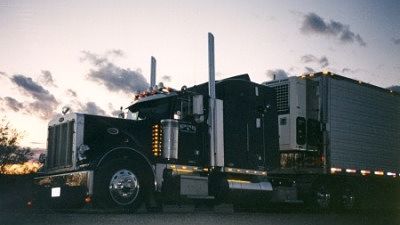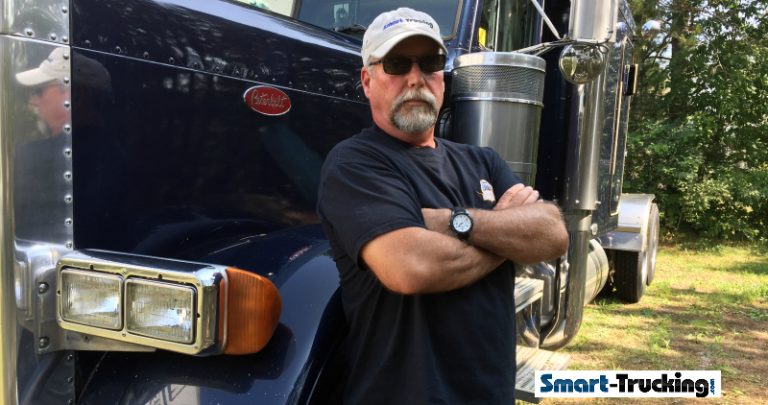Mastering Reefer Trucking: Essential Tips For Hauling Produce
Any truck driver who’s ever hauled temperature controlled freight will tell you that it’s not an easy gig.
Reefer trucking jobs hauling temperature controlled freight, particularly fresh produce, can be a challenging yet rewarding job for truck drivers.
From frozen meat and seafood to delicate fruits and vegetables, reefer trucking involves transporting a diverse range of goods.
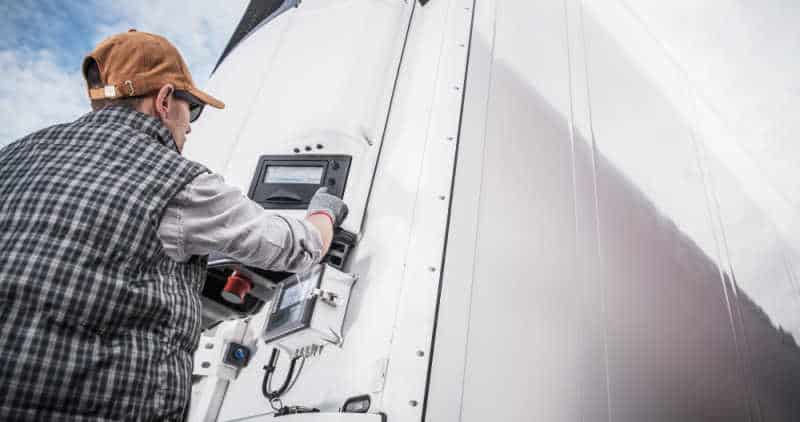
Types of Temperature Controlled Freight
Temperature controlled freight can be categorized into three main types:
- Fresh: Fresh loads, such as produce, are the most perishable and sensitive to temperature variations, making them highly valuable but requiring careful handling and monitoring.
- Frozen: Frozen loads, typically including meat, are transported at very low temperatures to maintain their quality and prevent spoilage.
- Heated: Heated loads are maintained at higher temperatures to prevent freezing and preserve the integrity of the cargo, such as pharmaceuticals or certain chemicals.
This article will provide valuable insights for both new CDL school graduates and seasoned veterans in the trucking industry, on the specifics of loading and hauling fresh produce.
Hauling Fresh Produce – Refrigerated Trucking
Hauling fresh produce presents unique challenges for the truck driver.
This is due to the diverse range of fruits and vegetables that require specific temperature conditions during transportation.
When dealing with mixed loads, it’s crucial to keep track of the different shipping temperature requirements, which can vary from around 34 degrees for strawberries and raspberries to 46 degrees for bananas.
Shippers usually provide temperature charts for company drivers, but owner operators may need to take responsibility for maintaining the correct temperatures themselves.
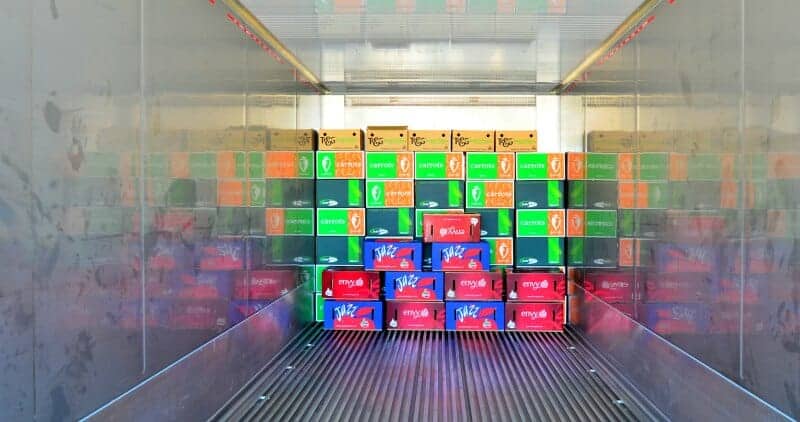
Loading and Air Circulation
Proper air circulation is crucial for maintaining the freshness and quality of fresh produce during transportation.
Reefer trailers have flexible plastic or rubber chutes that facilitate the movement of cool air from the reefer unit to the back of the trailer.
It is essential to ensure that the chutes are intact and free from tears to allow the continuous circulation of air throughout the trailer.
Additionally, channeled floors or flat floors should be considered, depending on the trailer type, to optimize air circulation and prevent blocking.
Leave Space at Back Doors
To facilitate the required air circulation, it is necessary to leave at least 4 or 5 feet of space between the freight and the back doors.
This space allows the air coming out of the chute to hit the floor and travel through the grooves back to the reefer unit.
Proper circulation and temperature control are crucial to keeping the trailer within the desired temperature range.
Inspection and Pre-cooling
Reefer trailers are equipped with small inspection doors that enable periodic temperature checks during transit.
It is imperative to use a thermometer probe to monitor the temperature of the freight and to be sure it is at the correct temperature.
Pre-cooling the product when loading is essential to maintain the correct temperature throughout the journey.
Being present on the dock during loading allows drivers to pulp (check temperature) each pallet and ensure the product is loaded at the required temperature.
Regulating Temperature and Avoiding Claims
To avoid freight claims, it is vital to regulate the temperature of the reefer unit effectively.
Many produce shippers use temperature recording devices like a Ryan Recorder to continuously monitor and record the temperature inside the trailer.
Maintaining a consistent temperature is crucial for sensitive products like lettuce or berries, as temperature fluctuations can result in damage and potential claims.
Understanding how the reefer unit operates and following proper procedures is essential to ensure the integrity of the cargo.
Myths and Best Practices
There are several misconceptions regarding reefer trailers and best practices for hauling temperature controlled freight.
Clarifying these myths and adopting recommended practices can contribute to a successful and efficient operation.
- The Pre-Cooling Myth: While some shippers require pre-cooling, opening the back doors during loading leads to a rapid loss of temperature. It is essential to be aware of this fact and communicate it effectively with shippers.
- Leaving the Reefer Running While Loading: Leaving the reefer running with open doors leads to inefficient cooling, excessive fuel consumption, and potential damage to the unit. It is best to turn off the reefer unit while loading and rely on proper loading procedures and insulation to maintain the desired temperature.
Monitoring and Maintaining the Reefer Unit
As an experienced produce hauler, I can’t stress enough how important it is to be trained on operating the reefer unit before embarking on your initial run.
Understanding how to set the temperature and manually defrost the unit is crucial.
The reefer unit’s temperature can swing up and down from the setpoint, so make sure you know how to set it to the desired temperature.
I recommend having an experienced colleague, particularly someone who knows the specific unit used by your company, show you the ropes in a training session before hitting the road.
This way, you’ll be well-equipped to handle any temperature-related challenges during your journey.
Always carry a manual provided by your trucking company that explains how the reefer unit works.
In case of any issues, study the manual and compare it against what you’ve been taught to troubleshoot effectively.
Be Prepared For Emergencies
It’s essential to be prepared for emergencies.
Keep a list of dealerships across the country where you can get repairs if your reefer unit malfunctions. Even on weekends, don’t hesitate to call them and let them know you need help.
Having this information handy and accessible can save you from costly delays and claims.
Some reputable reefer companies, like ThermoKing, offer features which can track the temperature of your cargo in real-time.
If you have access to such a system, it’s a valuable tool to ensure your cargo stays at the right temperature throughout the journey.
If any issues arise while you’re asleep or not actively monitoring the unit, the company can alert you promptly.
Best Practices for Checking Temperature
As a best practice, check the reefer unit about every four hours to ensure it’s running properly.
If you notice the temperature starting to rise significantly, it might be accumulating ice on the condenser, indicating the need for manual defrosting.
While modern units should automatically defrost themselves, it’s wise to know how to do it manually in case of any malfunctions.
Properly monitoring and maintaining the reefer unit will not only protect your cargo from damage but also help you avoid potential claims, ensuring a successful and profitable journey.

Best Practices for Loading Produce
Loading produce requires careful attention to detail. It’s important to follow specific procedures.
Here are essential factors to consider:
- Trailer Inspection: Before loading, thoroughly inspect the trailer, ensuring it is clean, the drain holes are clear, and the reefer unit and chutes are in good condition.
- Skid Height and Weight: Pay attention to the differences in skid height, weight, and content when loading. Proper stacking techniques, cross-bracing, and strategic placement based on weight can help prevent tipping and ensure even weight distribution.
- Pre-Cool The Reefer Trailer: The reefer trailer will not reduce the temperature of the produce. The reefer trailer simply isn’t designed for this. They will maintain the temperature of the produce, but not alter the temperature of the produce.
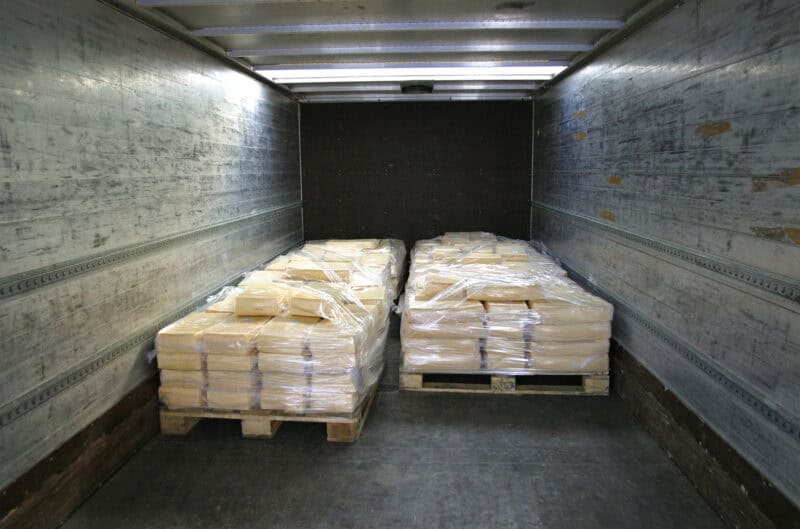
- Loading Pattern: Choose a loading pattern that minimizes empty spaces between skids and provides stability. Options include side-by-side, chimney blocking, or loading skids sideways.
- Securing the Load: Properly secure the load to prevent movement and potential damage. Use load locks vertically or airbags to secure skids, especially those with varying weights.
- Regulate Product Temperature: Monitor and maintain the product temperature within the desired range. Be present on the dock during loading to ensure the product is loaded at the correct temperature. Check temperature charts and verify consistency between paperwork and the reefer unit settings.
- Constantly Monitor the Reefer Unit: Regularly check the reefer unit, about every four hours, to ensure it is running properly. Understand the operation of the unit, including setting the temperature, manual defrosting procedures, and accessing emergency phone numbers for assistance.
- Extra Tips When In Transit: Drive gently and avoid sudden stops, starts, and aggressive maneuvers to prevent damage to the sensitive cargo. Maintain fuel levels in the reefer tank to avoid potential issues in cold weather conditions.
Conclusion
Hauling temperature controlled freight requires:
- careful planning
- attention to every detail and
- sticking to best practices
It is critical to understand the specific requirements of reefer trucking:
- maintaining proper temperature control
- and following recommended procedures for loading and securing the cargo
In this way, truck drivers can minimize the risk of freight claims and ensure the safe and timely delivery of temperature sensitive goods.
If you find reefer work isn’t for you, check out some tanker trucking companies or flatbed trucking outfits.
Both of these niches pay better than average pay.

More Articles You May Like
- 5 Important Things You Should Know About a Career in Trucking
- Truck Driver Skills: Tips, Tricks + Step By Step Instruction
- 10 Trucker Tips For Marketing Yourself as a Valuable Driver
- Top 10 Tips to Becoming a Successful Owner Operator


